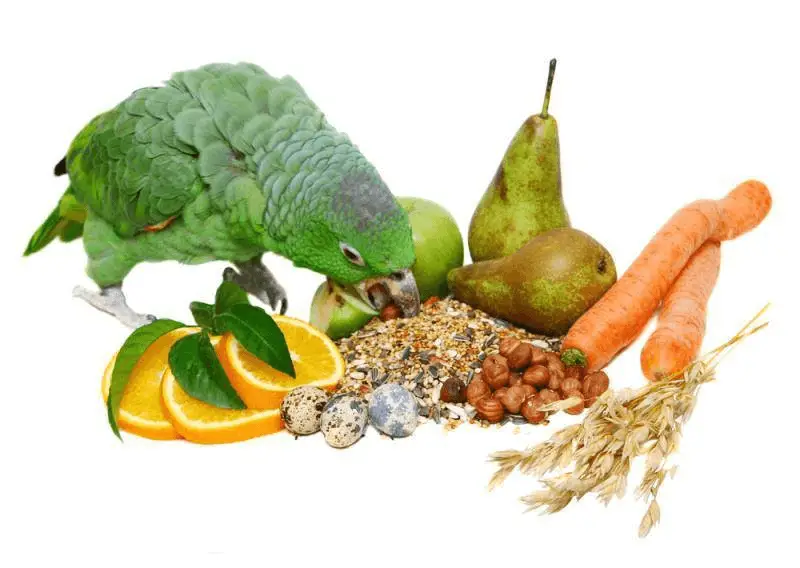
- The grains are rich in protein and lipids, so they should be offered moderately to parrots.
- All grains are eaten whole or sprouted.
- Sprouted grains and cereals are an excellent source of vitamin A.
- Pre-germination ( soaking 12 to 24 hours ) increases digestibility.
- Phytates are naturally present in all grains. They have the property of binding to minerals such as calcium, iron, and zinc and making them less bioavailable.
- When the grain is shelled or ground, the proportion of phytates, as well as the amount of minerals, is substantially reduced.
- Leaving for 15 minutes after cooking helps the cereal grains to loosen.
- More water in the cooking of cereals gives a softer and pasty grain, less water, the opposite.
- Storage of whole grains and grains: in tightly closed containers in a cool, dry, and dark place. Always keep the container tightly closed to avoid air oxidation.
- Quinoa, amaranth, and buckwheat are generally referred to as pseudocereals because unlike conventional cereals, they do not belong to the grass family. For this reason, their nutritional composition differs considerably from that of the latter; they are in particular free of gluten.
- Always buy grains for human consumption, never seeds for cultivation, because in this case the sanitary requirements are less strict and they may contain repellents or poisons for wild animals.
Food of parrots

Amaranth
- Particularly nutritious, amaranth contains more protein than legumes and is rich in calcium. Serve the grains as hot cereals. Dry heated grains are eaten like popcorn.
- There are several varieties of which only those with white grains are cultivated as food. Like buckwheat and quinoa, amaranth is not really a cereal, but it is used as such and can be reduced to flour.
- You can blow the grains, germinate them or grind them into flour.
Oats
- Rich in carbohydrates, lipids, and mineral salts. It is the most nutritious of cereals. Contains growth hormone. To offer moderately to birds not exercising ( cage ).
- Almond cooking: wash the grains and put in 4 times the volume of boiling water for 2 hours. Flakes: 2 times in its volume of water for 20 minutes.
- Bran, flour, whole or crushed grains, and oatmeal can be purchased in bulk. The flakes can be of various sizes, be rolled more or less finely, be free of their bran or not, etc. Organic oats are widely available at health food stores.
- Quick-cooking crushed oats have already been cooked in water and then dried. Its nutritional value is therefore reduced.
- Watch out for processed products, including breakfast cereals which may contain sugar, hydrogenated oils, preservatives, artificial flavors, colors, and other low-nutrient flavors.
- Add oat bran to yogurts, fruit compotes, bread mixes, pies, cakes, muffins, etc., to increase their dietary fiber content.
Corn
- Durum wheat contains more gluten, soft wheat less gluten, and minerals. The germination of wheat enhances its properties.
Food of parrots

Kamut
- Couscous, bulgur: the grain of wheat stripped of bran and germ, then coarsely ground, is called semolina, from the Latin simila, “flour flower”. It is used in particular to make couscous ( semolina and flour dough that is wet and rolled, sometimes by hand ) which comes from North Africa. As for the bulgur (which one sees written in several ways ) of the Near East, it is made of grains without bran, partially cooked before being ground. Cooking: bring the water to a boil ( twice the volume ), pour in the bulgur, cover, and turn off the heat.
- Semolina: finely crushed grain with its germ. Cook in 4 times its volume of water until boiling and thickening, Durum wheat is the variety used for making pasta and semolina is a coarse grind that is suitable for this use. The semolina can be whole or very refined ( 70% ), which will give so-called whole wheat pasta or white pasta.
- Flakes: cook in twice the volume of water. Put in cold water and cook for about 45 minutes.
- Wheat germ: keep in the refrigerator because it gets rancid very quickly. Sprinkle on the bird’s food.
- Bran: removed from the grain when the flour is milled, the bran is dried and then packaged and offered in grocery or health food stores. It can be added to various culinary preparations to increase its fiber content. Wheat comes in so many forms that it easily finds its place in most of our meals: bread, pasta, couscous, tortillas, etc.
Food of parrots
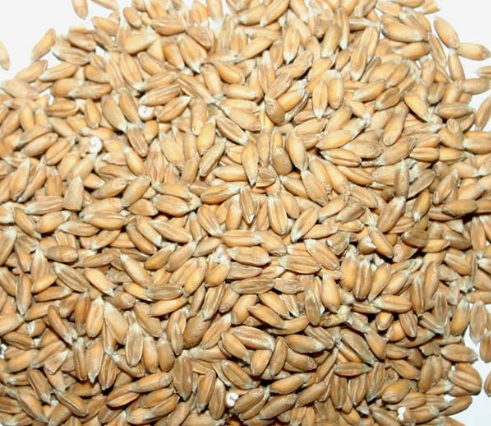
Spelled
- Spelled: Spelled contains more vitamins and minerals than wheat and is more digestible. Spelled is a traditional variety of wheat that has not undergone all the genetic modifications of common varieties. Its main advantage is that it is used unrefined. It is also said to be easier to digest than wheat, but this has not yet been demonstrated.
- Kamut: The term Kamut is a trademark that identifies products cooked with certified organic grains of the Egyptian wheat variety or pharaoh wheat, the ancestor of modern hard wheat.
- This variety is richer in protein than common wheat but contains less fiber. You can find soufflé Kamut and Kamut cookies in grocery stores.
- Due to its high content of phytic acid, wheat bran taken in large quantities reduces the absorption of iron, calcium, and zinc. Offer moderately to birds with calcium deficiency.
- Offer grains that have not undergone any processing and have preserved all their nutrients. Prepare the wheat flakes as you would for the oat flakes.
- Offer whole-wheat bread. because it is made from whole ( unrefined ) flour, it contains more nutrients than white bread.
- Try the Japanese-style whole wheat udon or somen pasta that differs in texture and flavor from classic Italian pasta.
- To prevent it from going rancid, keep whole or whole wheat flour in the refrigerator or freezer, especially if it is stone ground. You can also keep your wheat bread in the freezer. Whole grains can be stored like rice in a cool, dry place.
- Growing your wheat at home: sow the grains of wheat in a tray filled with good soil. Make sure the grains are not intended for cultivation ( they may have been treated ) or use organically grown grains. Very rich in vitamin A and calcium. Birds love it.
- Flours:
- Whole wheat flour: it is the most whole flour there is, it contains 98% of the grain of which only a few tough fibers have been discarded. It is also the one with the lowest glycemic index. The so-called integral bread is made from this flour.
- Stone-ground whole wheat flour: flour made with whole wheat grains, ancestrally ground on stone grindstones. It does not keep well and some artisan bakers mold it just before making bread.
- Whole wheat flour, whole wheat flour ( commercial ): flour that contains 95% of the wheat grain, as required by Canadian law. As with white flour, it may contain different food additives such as chlorine dioxide, benzoyl peroxide, or azodicarbonamide ( bleaching agents ).
Pumpkin seeds
- Rich in protein, unsaturated fat, and minerals.
- Unless vacuum-packed, the seeds quickly lose their freshness and go rancid. The best time to buy them is in the fall, right after harvest.
- The unshelled seeds will first be soaked for an hour in water in order to soften the fibers.
- Rinse, spread on a cookie sheet and bake for 40 minutes in the oven set to 150 ° C ( 300 ° F ), shaking the sheet lightly occasionally to prevent the seeds from burning.
- The naked seeds will be put directly in the oven for cooking of 12 to 15 minutes.
- Preferably keep them in the refrigerator to delay rancidity.
But
- It is the only cereal rich in provitamin A.
- Popcorn: As nutritious as regular corn, high in protein, iron, calcium, as well as fiber, and energizing while being low in calories, it makes a great treat for parrots.
- Cornmeal: polenta or cooked cereal. Cook it in boiling salted water for about five minutes without stopping stirring to prevent the preparation from sticking to the sides of the pan. Once cooled, it will thicken further. We can then cut it into thick slices to serve cold. My parrots are crazy about it!
- Flour and semolina can be incorporated into preparations for cakes, bread, muffins, pancakes, waffles, cookies, etc.
- Corn on the cob ( sweet corn ): Available in North American markets throughout the summer. Although after harvest, its sugar turns less quickly into starch than that of grain corn, it still loses its taste qualities over time. It is therefore recommended to buy it as fresh as possible, preferably directly from the producer or at the market, and to consume it immediately. The leaves should be green and smooth and the grains rounded. Cooking in water causes it to lose its nutrients.
Baking: in the oven in its envelope at 350 ° F or 180 ° C for 1/2 hour. - Corn for grain: It is usually found in the form of flour, flakes, oatmeal, and semolina, which unfortunately have undergone a processing process intended to remove the bran and germ in order to increase its shelf life. A few flour mills offer whole grain products; make sure they are freshly prepared, otherwise, they may be rancid. A few companies also sell whole grain, unprocessed.
- Cook Dried Corn Kernels: Whole grains require soaking for a few hours ( overnight if possible ) and cooking for a long time in the water to remove their skin. It is possible to omit the soda, but the grains will then be less digestible. They can be cooked in an electric slow cooker which allows very slow cooking without the risk of burning or causing the food to stick.
- Pruned corn: whole corn kernels stripped of their pericarp. They are cooked in boiling water until they soften.
- Popcorn: There is a special variety of corn, which is specially cultivated for popcorn. The hard shell of the grain explodes when heated. Popcorn in the market often contains sugar or salt.
- Tortillas: Commercial products are usually made with white kernel corn flour or wheat flour, although products made with yellow, red, or blue kernels are starting to be found. Preferably buy refrigerated or frozen products that contain fewer preservatives.
- A large part of the “Mexican” products ( tortillas, tacos, and chips ) that are found on the shelves of our grocery stores are made with corn flour obtained from grains of genetically modified varieties. Note that these products do not come from Mexico, a country that does not cultivate any variety of genetically modified corn, but rather from the United States, the world’s largest producer of GM plants.
- Cornstarch, dextrose, and maltose products are also made mostly with GMO corn, although not necessarily in food products that contain it, as they are substances purified.
- The morning cereal made from corn flakes can be made with transgenic corn.
- In Canada, the cultivation of fresh genetically modified corn is not permitted, while it is in the United States.
Millet
- Rich in vitamin A, very digestible.
- Dusty when purchased, wash very carefully before cooking.
- You can germinate whole millet.
- Parrots love millet in all its forms: bunch, flake, grain, cooked, or dry. Ideal food to fight fungal infections.
- Millet can be found in the bulk food section of big-box superstores and in health food stores. It is generally pearl millet, shelled. We also find, although more rarely, flour, semolina, flakes, and millet noodles.
- Grains, semolina, and flakes: store at room temperature for a month, then refrigerate.
- Flour: in the refrigerator or in the freezer.
Barley
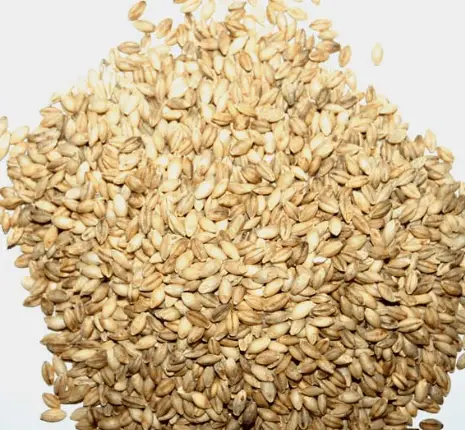
Food of parrots
- Rich in minerals including calcium.
- Offer the hulled barley to the bird. Avoid pearl barley that has undergone too much polishing by leaving more than half of its nutrients in it. We prefer hulled barley, almost intact and therefore much more nutritious. Force feed.
- Young barley shoots: You can also sow barley indoors and harvest the young shoots to offer them as greenery to the bird. First, soak the grains for eight hours, then sow them, without covering them, in a shallow tray filled to three quarters with good potting soil. Water, cover with a piece of plastic, leaving one end open for ventilation. Water daily for three days, remove plastic, and expose the tray to sunlight for five to eight days, always making sure to keep the soil moist. Cut the young shoots if necessary.
Pistachios
- Pistachio is not a nut, but a seed.
- The shell opens on its own when the pistachio is ripe.
- Pistachios are sold whole or shelled. We prefer whole pistachios for his parrot, unsalted and unstained.
- The shell of pistachios tends to turn pink when it dries up, choose those that offer a beautiful creamy beige shell.
- Rancid quickly. Store pistachios in an airtight container away from moisture, preferably in the refrigerator; still in the shell. They will keep for 3 months or 1 year in the freezer. Once shelled, they will keep for 3 months in the refrigerator, but cannot be frozen.
Quinoa
- Quinoa is a complete protein that contains all 8 essential amino acids. It is also an excellent source of calcium.
- You can find quinoa grains, flour ( raw or roasted ), flakes as well as various baking preparations.
- Quinoa pasta usually contains other grains, such as wheat and corn.
- The quinoa grain contains a large germ, the embryo, which will eventually give rise to a new plant. This is the part of the grain that contains the most nutrients.
- The grains sold in North America and Europe are generally free of saponins in the bark, but it is important to rinse them all the same with plenty of water in order to remove any residue of these substances, at the risk that they give a bitter taste to the dish. Rinse until the water is clear and no longer foams.
- Quinoa can replace other grains in almost any recipe, for example, bulgur in tabbouleh salad, wheat semolina in couscous, or rice in risotto.
- Store the grains in a cool, dry, dark place, and the flour in the refrigerator or freezer.
Rice
- The whole grain without its outer rind ( white rice loses all of its minerals ) is suitable for parrots that do not move much, as it is easily assimilated. Brown rice contains many beneficial active ingredients that are present only in the shell ( her ) of rice. None of the active ingredients are found in white rice since the rice bran has been removed. Rich in vitamins and minerals.
- The rice will be eaten as fresh as possible, at least within the year of its harvest. With age, the grain hardens, and becomes firmer and less sticky. It loses its moisture and splits more easily during cooking. As for aromatic rice, they become stale as they age. The only exception is basmati rice, which gains in texture and flavor after one or two years of drying.
- As the bran goes rancid easily, the shelf life of whole rice does not exceed six months; beyond that, it is advisable to keep it in the coldest part of the refrigerator, making sure that it does not take in moisture.
- This is true for reds, blacks, and purples, which are whole grain rice. White rice will be kept in an airtight container, in the cupboard, or in the expense.
Long rice: sticks less.
Short rice: contains more starch, therefore sticks more. - Phytin: The phytin in rice bran decreases the absorption of calcium.
- Rinse: the rice must be rinsed to get rid of its excess starch and its residues. Rinse until the water runs clear.
- Soak: Soaking rice is not very common in our North American kitchens, but it is an important step. It reduces the cooking time by a few minutes, but above all, it has the effect of improving the texture of the rice, the inside and the outside of the grain cooking simultaneously and evenly. Soaking for one hour cooks white rice in an average of 6 to 8 minutes, whereas it normally takes 15. Although it has been cooked before, parboiled rice takes a little longer to cook: 20 minutes if not soaked, 12 otherwise. Whole rice cooks in an hour, slightly less if soaked for four to eight hours.
- Cooking: Rice cooking is usually done in two stages. First, it is the water that cooks it, and then, as it evaporates, it is the steam. It is this which gives the rice its swollen shape. It is therefore important that the water is first brought to the boiling point; then reduce the heat to a minimum and cover.
- Water-rice ratio: recommendations vary from one cook to another, depending on the type of rice, its “age”, its texture, etc. Experienced cooks put the rice in the pot, then add enough water so that the level is about 1 to 1.5 cm above the level of the rice, regardless of the amount of grain to be cooked. In fact, to cook perfectly, rice only needs its own volume of water plus which will evaporate during cooking. It goes without saying that the longer the cooking time, the greater the quantity of water must be.
When the rice is cooked, stir it gently with a fork to release the steam and separate the grains. - Rice paper: thin translucent pancakes made from rice flour and water used by Vietnamese and Thais to make spring rolls. Rice noodles: Quick when cooked, birds go crazy for it when sautéed with vegetables.
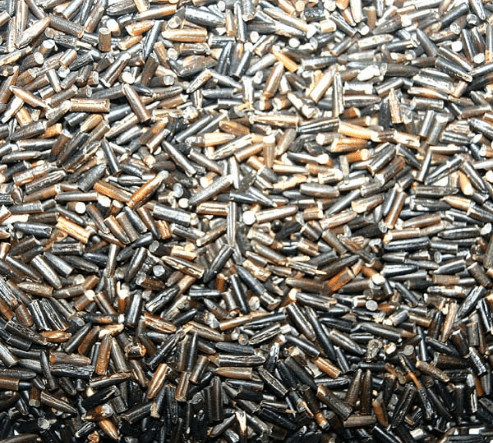
Food of parrots
Wild rice
- Wild rice: wild rice, whose official name is wild rice, does not belong to the same genus as common rice. The name “wild rice” was given to it because, just like its Asian cousin, it grows in damp places.
- The grains of wild rice acquire their blackish color after being shelled, cleaned, and dried.
- To ensure that you are dealing with truly wild rice, check that the packaging includes one of the following statements: lake wild rice, hand-picked wild rice, hand-harvested wild rice ( riz wild lake, wild rice picked or harvested by hand ).
- Rinse the rice under running water before cooking it. Calculate about one cup of rice for three cups of water. You can cook it on the stove or in an oven set to 175 ° C ( 350 ° F ). Cooking takes 30 to 60 minutes depending on the variety, but usually 45 to 50 minutes on the stovetop and one hour in the oven. The kernels should be split and show a white core, but should not be curled (a sign that they have been overcooked ). If necessary, drain the rice at the end of cooking.
- Wild rice will keep for at least a year in an airtight container, protected from light and heat.
Buckwheat
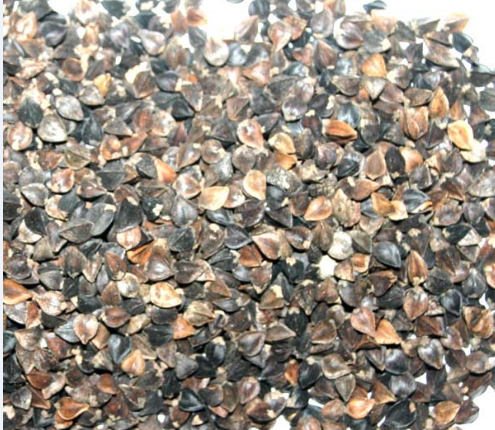
Food of parrots
- Buckwheat seed must be shelled to be edible.
- Rich in vitamins and minerals including calcium, buckwheat is also a complete protein.
- Whole grain ( black ) germinates well, but it is best to use shelled buckwheat.
- Parrots love to chew on whole buckwheat.
- Kasha is the name given to buckwheat stripped of its outer shell and roasted.
- Buckwheat is also made into flour: the darker the flour, the more nutrients it has retained.
- Buckwheat flour is more or less refined ( that is to say which contains or does not contain parts of the rind ), as well as flakes, semolina, pancake mixes, or other baking preparations and noodles ( known by the Japanese name of soba ). As for the kasha, it comes whole and in three different versions, depending on the use you want to make of it.
- Some recommend mixing the grains with an egg or egg white, making sure to coat them well, then cooking the preparation over high heat in a pan. The albumen in the egg has the effect of partially sealing the grains and preventing them from sticking to each other. Stir constantly to prevent the preparation from burning. This takes two to four minutes, or until the albumen is completely dry and the buckwheat kernels have taken on a nice brown color. Then add the liquid ( water or broth ), cover, and cook for ten minutes. Check if the grains are tender, if not, cook for three or four minutes long.
- You can replace some of the wheat flour with buckwheat flour in the preparation of homemade bread, cookies, cakes, muffins, bagels, etc.
- Galette: mix the flour with water and salt and let the preparation stand for a few hours. Cook in oil or butter.
Rye
- With a sweeter and more pronounced flavor than wheat, it is delicious.
- Rich in vitamin E and contains calcium. Very rich in fiber.
- Energizing cereal builds muscles without fat accumulation.
- You can find more or less refined rye flour, flakes, whole or crushed grains, and various processed products, in particular bread, rusks, crackers, and pasta.
- It can be prepared like rice, for example in pilaf and risotto, taking into account the differences in cooking time.
- Flakes: add them to muesli or granola, or cook them like oatmeal.
- Sprouted rye: discard grains that are moldy or have an unpleasant odor. Soak the grains for 8 hours to 14 hours and let them germinate. The young shoots will be ready 24 hours to 36 hours later.
- Wholemeal flour: keep it in the refrigerator or, if it is to be kept for several months, in the freezer.
Sesame
- Rich in calcium ( in the bark ).
- Black and beige unshelled sesame seeds are commercially available, as are shelled seeds, which are usually white. Preferably, the former will be chosen which, from a nutritional point of view, are clearly superior to the latter.
- Tahini: Tahini ( sesame puree ) can be found in large grocery chains, health food stores, and oriental grocery stores. You can buy it ready-made or make it yourself by toasting sesame seeds in a dry pan until they start to swell and release their oil. Then go through a blender until you get a thick puree, then through a fine sieve to remove the coarse fibers.
- Germination: sesame seeds can be germinated. However, you have to make sure you have whole, unshelled seeds. Soak them for 8 to 14 hours and germinate for 24 to 36 hours. Consume the same day, as the young shoots quickly become bitter.
- Kept in a cool, dry place, protected from light in an airtight container, the seeds will keep for at least a year, usually much longer.
Sunflower
- To offer soaked two days ( beginning of germination ).
- Rancid quickly if peeled.
- To open the seeds in the shell, put them in a paper or plastic bag and crush them with a rolling pin. Then put everything in the water: the seeds will go to the bottom while the husks will float. It will then be easy to collect them for disposal. Dry the seeds on absorbent paper.
- The seeds can be soaked overnight before consuming them, to make them
more alkaline and increase their digestibility. - Seeds with husks: they can be stored for several months at room temperature.
However, if the temperature rises above 20 ° C, put them in the refrigerator. - Seeds without husks: keep them in the refrigerator in a tightly closed container or freeze them, in which case they will keep for a year.
- Sunflowers are easy to grow. You can start a few plants indoors in peat pots. They will flower earlier than those sown in the ground. The goldfinch, the turtledove, the big bill, the sparrow, and the blackbird are very attracted to the large heads full of seeds. To keep them away, we install strips of aluminum waving in the wind ( or aluminum pie plates ) near the flowers. You can also cover the heads with a fine mesh fabric ( cheesecloth for example). Depending on the cultivar, plants mature between 70 to 100 days. The seeds are ripe when the back of the flower head is yellow. Cut off the head, keeping 30 cm of the stem, and hang it upside down in a dry place. Separate the seeds from the head when they are very dry or offer the fresh head to our birds after having washed it thoroughly.
Soaking and cooking tables
Whole grains
Food of parrots :1 cup equals a volume of 250 ml
| Cereal 1 cup | Soak | Water | Cooking |
| Amaranth | no | 2 cups | 20 minutes |
| Oats | Yes | 4 cups | 2 hours |
| Durum wheat | Yes | 3 cups | 2 hours |
| Soft wheat | no | 3 cups | 2 hours |
| Spelled | Yes | 4 cups | 50 minutes |
| Kamut | Yes | 4 cups | 1 hour |
| Millet | no | 1 ½ cups | 20 minutes |
| Hulled barley | Yes | 3 cups | 1 hour |
| Quinoa | no | 2 cups | 15 minutes |
| Short rice | no | 1 ½ cups | 1 hour |
| Long rice | no | 2 cups | 35 minutes |
| Red rice | no | 2 ½ cups | 1 hour |
| Wild rice | Yes | 2 cups | 30 minutes |
| Buckwheat | Yes | 1 ½ cups | 15-20 minutes |
| Rye | Yes | 3 cups | 1 hour |
The Morning Parrot Feed
SOURCE:Echo Bonaire
Processed cereals
| Cereal 1 cup | Water | Cooking |
| Bulgur | 1 ½ cups | 20 minutes |
| Oatmeal | 2 cups | 20 minutes |
| * Wheat flakes | 2 cups | 1 hour |
| * Rye flakes | 2 cups | 1 hour |
| Cornmeal | 4 cups | 25 minutes |
Food of parrots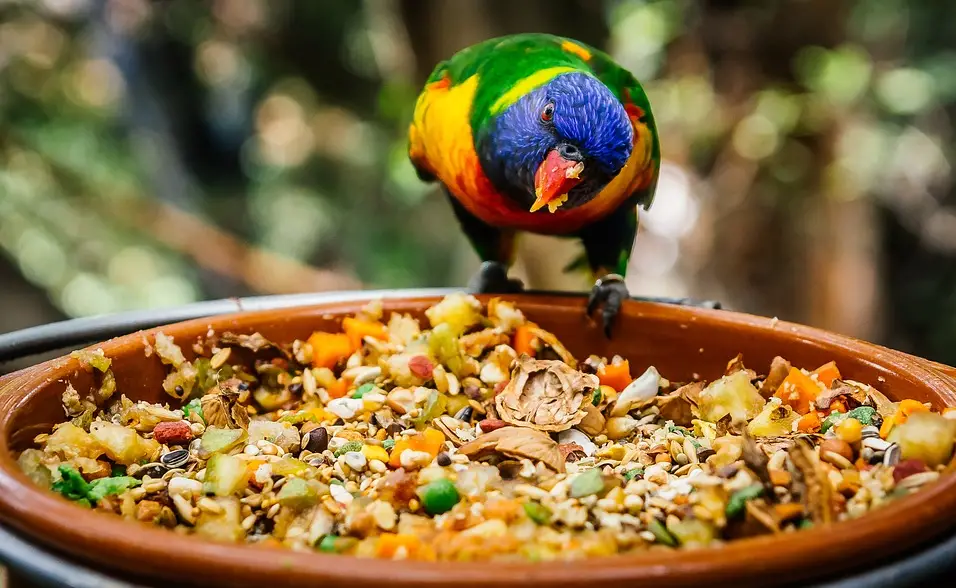
Related Articles:




















